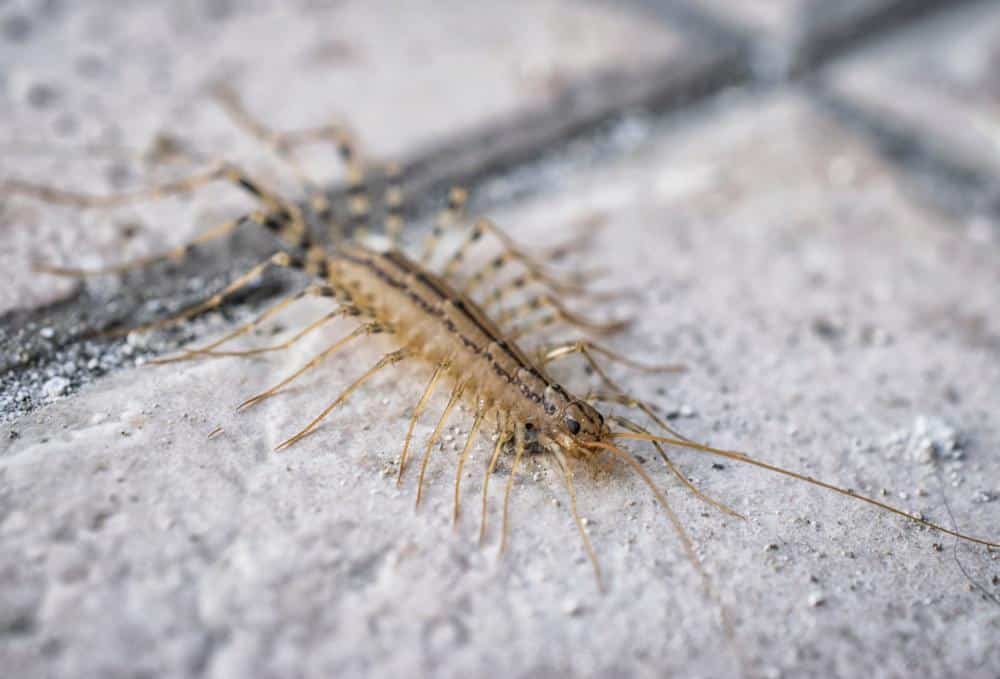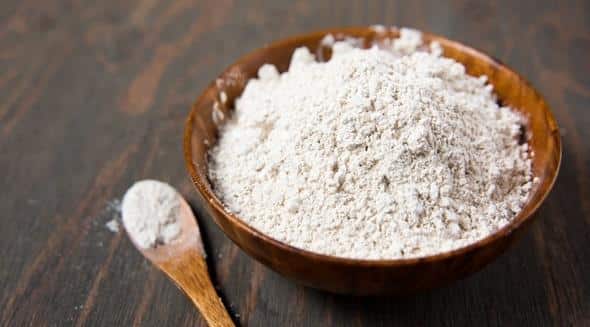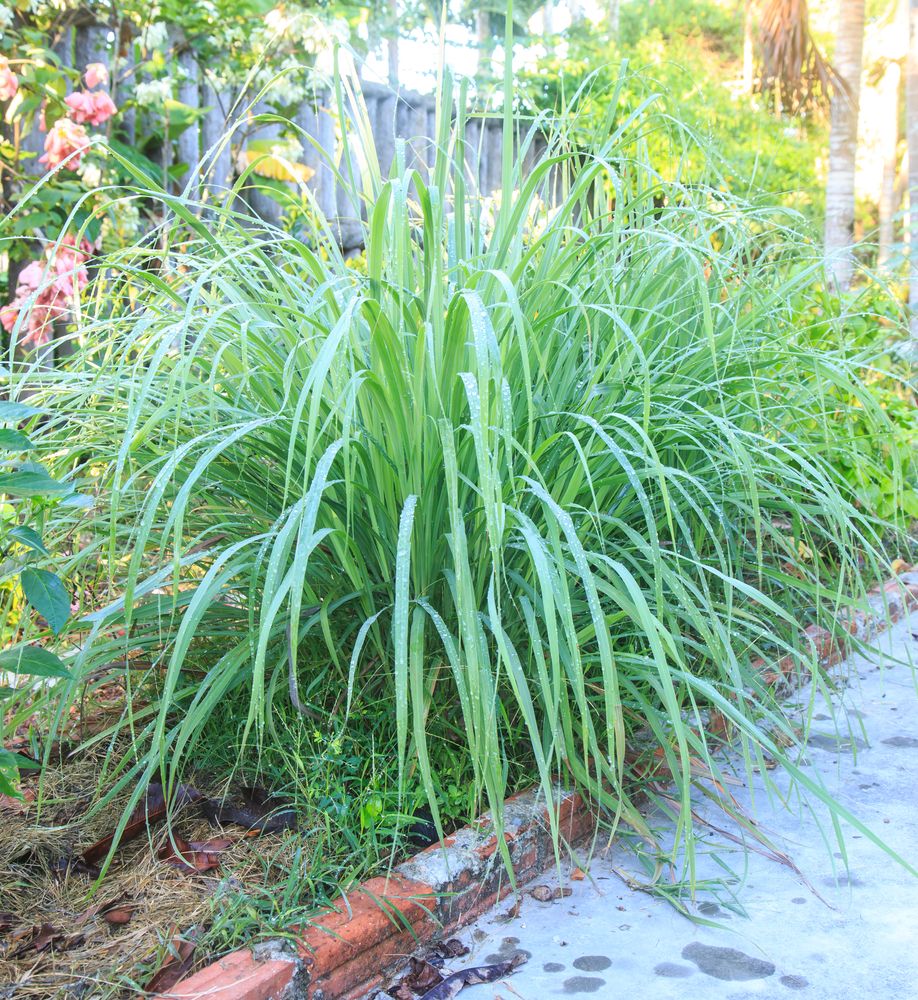Spotting a centipede inside your house can send shivers down your spine. While generally harmless, these creatures with many legs move rapidly and can help control the population of pests like roaches, but this doesn’t mean you want them scurrying around your house.
The upside is there are numerous effective methods to rid your home of centipedes without resorting to harmful chemicals or drastic measures. So, fear not, should they make it inside your house.
In this guide, you will learn how to get rid of centipedes in house and keeping them out for good.
How To Get Rid Of Centipedes In House
Natural Remedies
Use these methods to eliminate centipedes if you’d rather avoid harsh chemicals.
1. Sprinkle Diatomaceous Earth (DE)
Apply a thin layer of food-grade DE in areas where you have seen centipedes or where they may hide. In addition, sprinkle it on entry points like crevices, cracks, and baseboards.
This abrasive powder will cause cuts on the bodies of centipedes, leading to dehydration and eventual death. Also, consider scattering this substance outside to deter these creatures from entering your house.
2. Sprinkle Salt
You can also ward off centipedes with salt. Sprinkle a thin layer of salt along baseboards, cracks and crevices, areas with moisture, and around entry points. Coarse salt, like rock and sea salt, provides maximum effectiveness.
Avoid fine table salt because it may dissolve too quickly and be less effective in repelling centipedes. Also, keep salt away from your pets since they could suffer health issues if they ingest it in large amounts.
3. Apply Essential Oils
Essential oils could be the answer if you’re seeking a natural and aromatic solution to get rid of centipedes in your living space. Many essential oils are effective natural repellents.
Essential oils that are effective against centipedes are tea tree, eucalyptus, clove, rosemary, thyme, lavender, and peppermint.
Dilute the solution by mixing the essential oil with carrier oil or water. Next, spray it on entry points such as doors, windows, cracks, and crevices, as well as areas where moisture accumulates, such as bathrooms and basements.
4. Cedarwood Chips
The aromatic oils in cedarwood are effective in repelling centipedes, so consider using cedarwood chips to make your home an inhospitable environment for them. Choose fresh and fragrant cedarwood chips, as they contain higher concentrations of the repelling oils.
Scatter the chips in problem areas to form an effective barrier. Wear gloves when handling cedarwood chips, and wash your hands thoroughly afterward because they may cause irritation or allergic reactions in some individuals.
Read More: How to Get Rid of Crane Flies
5. Deter Centipedes With Lemongrass
The earthy and citrusy scent of lemongrass is repulsive to centipedes. Control these creatures with lemongrass using either fresh lemongrass stalks or essential oil. The essential oil is highly concentrated and potent, while fresh lemongrass stalks release a subtle citrus scent over time.
6. Pandan Leaves
Another way to naturally combat centipedes is with pandan leaves. Although pandan leaves smell heavenly to humans, the same cannot be said for centipedes. Find vibrant green pandan leaves without any signs of damage or decay, then cut them into small strips or pieces (about 2-3 inches long) using scissors or a knife.
Chopping the leaves into tinier pieces helps enhance the aromatic compounds release. Once you have the pandan leaf strips, scatter them in areas where centipedes are active or the likely entry points.
7. Sticky Traps
Set up some sticky traps in the crevices, cracks, and corners of your home, as well as windows, baseboards, and doors, to capture and immobilize centipedes. Place the traps flat on the floor or vertically against walls, ensuring maximum coverage of the adhesive surface.
8. Spray Vinegar
Deter centipedes from your house with the pungent odor and taste of vinegar. It will keep them from crossing into your living space. Finding centipedes under sinks or close to kitchen and bathroom drains isn’t uncommon. Pour vinegar down the drains to ensure centipedes stay out.
Other Centipede Control Methods
Aside from natural remedies, below are other methods you can employ to eliminate centipedes.
9. Vacuuming
Vacuuming does more than just remove adult centipedes; it also gets rid of the eggs and larvae, thus reducing the chances of future infestation. Vacuuming offers an immediate and practical solution for eliminating centipedes from your house.
Suck them out with a high-power vacuum with a hose attachment for precision cleaning in hard-to-reach areas. Afterward, empty the vacuum cleaner contents into a sealed trash bag or container and throw them in a sealed garbage bin to prevent re-infestation.
10. Remove The Centipedes Physically
This method will only work if you do not mind handling these icky creatures with your hands. It offers a hands-on and immediate solution against a minor centipede infestation.
When you spot a centipede, approach it slowly and carefully to avoid startling or injuring it. Then, gently but firmly grasp it with toilet paper or paper towel or capture it with tongs. After that, transfer the centipede to a sealed container or bag for disposal, then release it outdoors or dispose of it in an outdoor trash bin.
11. Use Moth Balls
Scatter moth balls around areas centipedes often infest, like the damp and dark areas of your home. The naphthaline gas that moth balls produce poisons centipedes, thus helping reduce their population.
However, ensure this substance doesn’t come into direct contact with your bare skin and keep it from your kids and pets. Moth balls can be harmful if absorbed via the skin, inhaled, or ingested.
12. Chemical Insecticides
Synthetic insecticides formulated for centipedes and indoor use swiftly kill these creatures on contact. Use them, especially when dealing with a large infestation.
Insecticides usually contain active ingredients such as pyrethroids or synthetic pyrethroids, which are effective against centipedes. There are insecticide sprays and powders.
Spray or spread the insecticide along entry points to form a protection barrier. In addition, apply the insecticide around your home’s exterior to deter the centipedes from entering the house.
Adhere to the manufacturer’s precautions and instructions because these chemicals are poisonous. Also, wear gloves, long sleeves, and a mask to ensure the chemical doesn’t touch your skin or you don’t inhale it. Furthermore, don’t let your kids and pets go into treated areas for a while.
Prevention Measures
After a successful removal of centipedes from your house, it is imperative to keep them out. There are ways to create an environment less appealing to centipedes. Do the following:
a) Seal Entry Points
The gaps and cracks between windows, walls, utility lines, and doors can offer centipedes the means to enter your house. Inspect your home and seal off potential entryways with weather stripping, caulk, or sealant.
b) Reduce Moisture
Centipedes are attracted to moisture, so they often stay in damp areas because they require plenty of moisture to survive. Therefore, keep your home dry. But how? Use exhaust fans in bathrooms, laundry rooms, and other areas susceptible to moisture buildup to remove moisture.
Lower humidity levels with a dehumidifier and install vents or fans under the house. Also, don’t overwater your indoor plants.
Moreover, seal any cracks in the house foundation with a waterproof sealant to prevent water intrusion. You should also place moisture-absorbent materials such as silica gel or desiccants in moisture areas.
c) Declutter
Eliminate potential centipede hiding spots by removing clutter like cardboard boxes, newspaper stacks, and clothes. Keep your home decluttered and organized.
d) Keep The Perimeter Clear
Keep your home’s perimeter clear by clearing and discarding debris, like leaves, mulch, and woodpiles, to remove hiding spots for centipedes. Also, regularly trim bushes, shrubs, and trees around your home, especially those close to the exterior walls.
You should also leave a gap between plants and the exterior walls and regularly clean out gutters and downspouts to prevent them from becoming clogged with debris. If you keep firewood near your home, store it in an elevated spot a good distance from exterior walls.
e) Eliminate Food Sources
Centipedes primarily consume tiny insects like ants, roaches, and termites. Reducing the population of these insects in and around your home will help discourage centipedes from sticking around. How, you ask?
- Regularly clean your home to remove crumbs, food debris, and other organic matter that can attract insects.
- Store food inside airtight containers where insects cannot access.
- Promptly clean crumbs and spills and crumbs, especially in kitchens and dining areas.
- Take out garbage regularly and keep it outdoors and indoors in sealed garbage cans.
- Fix leaks, repair dripping faucets, and facilitate proper drainage.
- Keep your yard and outdoor areas tidy by mowing the lawn regularly, removing leaf piles, and trimming vegetation.
f) Proper Lighting
Aside from moisture, darkness attracts centipedes, so keep your home well-lit to discourage their presence. Use bright overhead lights or lamps indoors.
Final Remarks
You could choose to let centipedes be since they are harmless creatures. However, they are understandably cringe-inducing. So, when faced with a centipede infestation, implement the above natural remedies and chemical and non-chemical treatments to eliminate them. Also, be diligent in your efforts to keep them out of your house by adopting prevention strategies.

I’m Mike Hyle, an exterminator with 7+ years of experience handling all sorts of pests, including mice, cockroaches, bed bugs, and termites. I also write for Pest Solutions DIY blog to share my knowledge and help homeowners keep their homes pest-free. Outside work, I enjoy hunting, snowshoeing, and exploring nature. Check out my blog for helpful pest control tips!




